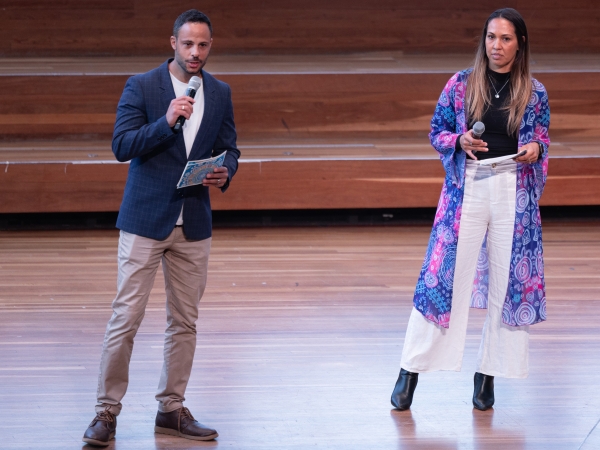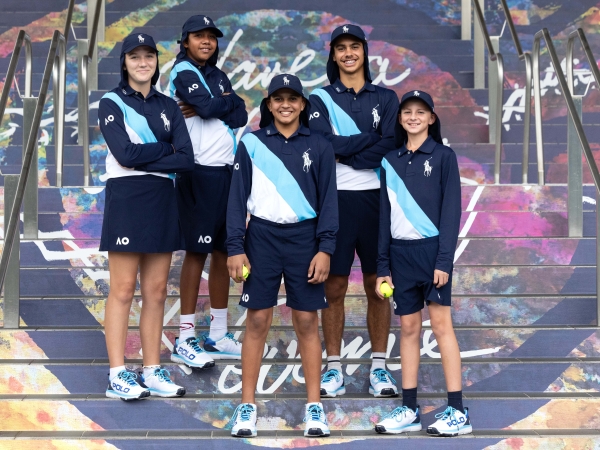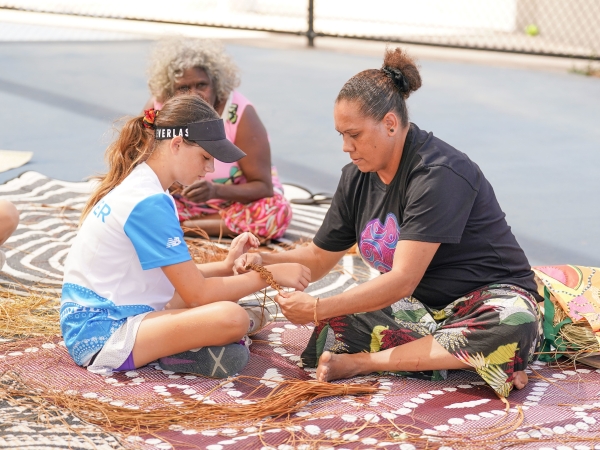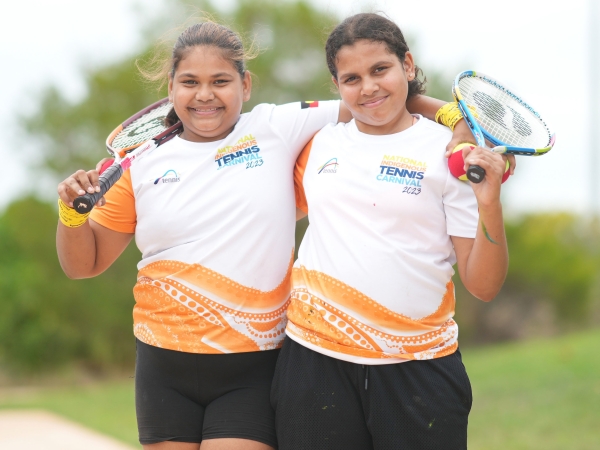With smoking ceremonies, dance performances, displays from one of our finest artists, special coin toss events and other activations, First Nations Day at the Australian Open 2024 truly puts the international spotlight on Australian First Nations culture.
MORE: What's on at Australian Open 2024
“We want to showcase our culture and the significance of the land here at the Australian Open [that] particularly honours the Wurundjeri Woi Wurrung people”, says Kyah Jones, First Nations Lead at Tennis Australia.
Celebrating the 50th Anniversary of Evonne Goolagong Cawley's first Australian Open win, First Nations Day also recognises the role of First Nations people in Australian tennis.
“This year, AO 2024, is really highlighting Evonne's 50th year anniversary, since she first won her Australian Open in 1974,” Jones explains.

With artistic works by First Nations artist Lyn-Al Young, including on the stairs to Margaret Court Arena, this collaboration has a message for all, which came from Evonne's mum.
“You'll see a lot of messaging across sites, saying 'have a lovely day',” says Jones, referencing the words that Goolagong Cawley’s mother would share each day with her daughter."
“She [Young] had a very unique conversation with Evonne and really created an art piece that told her story, her song line, which Lyn-Al explains.”

Lyn-Al Young also produced a 150-metre hoarding along the Yarra at Birrarung Marr, which chronicles Evonne's journey.
“There's images of Evonne and a little story next to it”, says Jones. “Having First Nations Day really showcases to the world Aboriginal people and who we are.”
As an international event, the Australian Open represents a unique opportunity to showcase Australian First Nations culture."
“It's such a point of difference to the other Slams as well, that we've got the world's longest living culture to celebrate,” says Kerry Tavrou, Head of Inclusion and Diversity.
First Nations language is also prominent, with Wominjeka 'Welcome' and Narrm 'Melbourne' presented in huge block letters at AO Ballpark.
“We are here at the Australian Open celebrating First Nations culture. It doesn't happen all the time”, says Jones."
The benefits of First Nations collaboration extend well beyond the tournament too, with Aboriginal health a major focus of Tennis Australia's extensive inclusion focus.

“We try and utilise things like First Nations Day to go beyond site. We've got Deadly Choices coming in and they ran a health campaign so Aboriginal people around the country got health checks”, Tavrou points out.
“They got an AO Deadly Choices-design t-shirt and they got a chance to win a trip to come here and play on one of our major courts and meet Evonne Goolagong on First Nations Day.”
But it's not just health. Kyah Jones says the program is multi-faceted.
“We can utilise this as a platform for health, as well as our merchandise range. Proceeds go back into Aboriginal tennis programs.”

Those programs are bearing fruit at all levels, including AO 2024.
“We have eight First Nation ballkids. We've also had some employment of First Nations people as part of the AO this year.
And Tavrou says the picture is even bigger.

“If we can use our platform for good, why wouldn't we? It's kind of the right thing to do.
“It truly is about trying to make a difference and making the world a better place through tennis.”
As an international event, the Australian Open presents opportunities to expand further.
“For me, this AO, we've really created more relationships with other First Nations organisations”, says Jones.
Tavrou agrees. “Félix [Auger-Aliassime] is a Canadian player from main draw who is particularly engaged in First Nations culture and every year he'll come out and meet with one of our First Nations artists or go on a site walk and learn more about it,” he says. “It's great seeing the main draw players interested in First Nations artwork.”
At a national level, the game continues to expand through the First Nations community.
“Tennis Australia also have our National Indigenous Tennis Carnival held every year in Darwin and every state gets to run a lead-in event for kids to be selected to participate,” says Jones.
“We had over 160 kids in Darwin last year and that is also where the ballkids were selected. So, we're really creating a pathway from grassroots in each state to our Darwin National Indigenous Tennis Carnival.”
The Hot Shots Tennis program also offers unique opportunities to engage with remote communities. With small, very portable nets and a ball that can bounce on just about any surface, Hot Shots places minimal demands on tennis infrastructure, which is especially important in communities where there is little to work with.
“Basketball courts they've already got. We just set up the mini court”, says Jones.
With role models like Goolagong Cawley and Ash Barty, tomorrow's champions have plenty of inspiration to work.
“It really warms your heart to see how these Aboriginal icons are making a difference, not only to Aboriginal people but to non-Aboriginal people and the world”, says Jones.